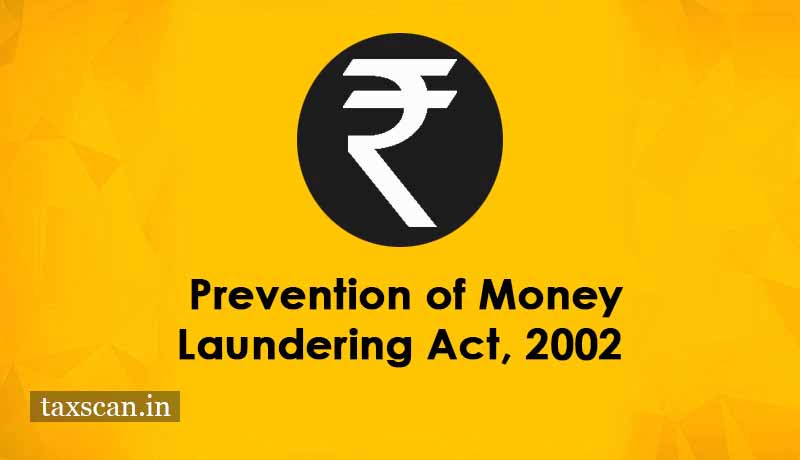What’s in store for the Banks and Financial Institutions under the PMLA?

With the introduction of the Prevention of Money Laundering ( PMLA ) Act, 2002 (‘Act’), which was made effective from 01.07.2005, a number of legal issues arose, which required adjudication in various courts and competent tribunals. One such issue which is plaguing the courts is whether the action taken by the authorities under Section 5, 7 and 8 (as the case may be) of the Act will over-ride the valid and bonafide mortgages created in favour of the Banks and Financial Institutions?
In order to dwell on the said issue, it is necessary to look into the objectives with which the PMLA Act was enacted.
The Act was made to prevent money laundering in India, to provide for confiscation and seizure of property obtained from laundered money and to deal with connection issues. Keeping the objectives of the Act in mind, powers have been conferred upon the Director / Deputy Director of the Enforcement Directorate under Section 5 of the Act to provisionally attach the properties, which are a Proceeds of Crime, subject to confirmation by the Adjudicating Authority within a period of 180 days.
The Act under Section 2(1)(u) defines the concept of "Proceeds of Crime" which has been stated to mean any property derived or obtained, directly or indirectly, by any person as a result of criminal activity relating to a scheduled offence or the value of any such property;
And recently vide Amendment Act, 2019, notified on 01.08.2019, the following explanation was added to further clarify the concept of proceeds of crime:
[Explanation.-- For the removal of doubts, it is hereby clarified that "proceeds of crime" include property not only derived or obtained from the scheduled offence but also any property which may directly or indirectly be derived or obtained as a result of any criminal activity relatable to the scheduled offence ;]
From the above definition and the amendment, it is clear that proceeds of crime refer to (i) any property derived or obtained by any person directly or indirectly, or the value thereof, (ii) as a result of a criminal activity relating to a scheduled offence (offences provided in the schedule to the Act), or (iii) in case such property is held or taken outside the country, then property equivalent in value held within the country.
It is clear that the property which is not derived or obtained as a result of a criminal activity relating to the scheduled offence and/or is not taken outside the country cannot be the subject matter of the proceedings under the Act. The amendment further clarifies that such property which is not only derived or obtained from the criminal activity but derived or obtained as a result of the criminal activity relating to the scheduled offence is also included as proceeds of crime.
Hence, the Director must attach only such properties, which are proceeds of crime and not properties, which are outside the purview of the definition as mentioned above. The necessary corollary, thus, is that the property acquired prior to the offence period, and not put in use for the criminal activity relating to the scheduled offence cannot be attached as proceeds of crime.
‘Reason to believe’& ‘material in possession’
Further, the Act mandates that the Director under Section 5 of the Act and Adjudicating Authority under Section 8 of the Act, must have (i) reason to believe (which reason must be specifically recorded in writing) and (ii) have the material in possession to evidence that the property, which is the subject matter of attachment is a proceed of crime.
The use of the term ‘reason to believe’ and ‘material in possession’ clearly shows that the authorities under the Act must apply its mind to the situation, before attaching any property as a proceed of crime. We find that reason to believe has been defined under Section 26 of the Indian Penal Code, 1860, which reads as under:
“Reason to Believe”.—A person is said to have “reason to believe” a thing if he has sufficient cause to believe that thing but not otherwise.
The Hon’ble Delhi High Court had the occasion to deal with this issue, and it was held in the judgment of J. Sekar Vs. Union of India, (2018)246 DLT 610 as under:
“72. Reasons to believe cannot be a rubber-stamping of the opinion already formed by someone else. The officer who is supposed to write down his reasons to believe has to independently apply his mind. Further, and more importantly, it cannot be a mechanical reproduction of the words in the statute. When an authority judicially reviewing such a decision peruses such reasons to believe, it must be apparent to the reviewing authority that the officer penning the reasons has applied his mind to the materials available on record and has, on that basis, arrived at his reasons to believe. The process of thinking of the officer must be discernible. The reasons have to be made explicit. It is only the reasons that can enable the reviewing authority to discern how the officer formed his reasons to believe. As explained in Oriental Insurance Company v. Commissioner of Income Tax [2015] 378 ITR 421 (Delhi), “the prima facie formation of belief should be rational, coherent and not ex facie incorrect and contrary to what is on record”. A rubberstamp reason can never take the character of ‘reasons to believe’, as explained by the Supreme Court in Union of India v. Mohan LalKapoor (1973) 2 SCC 836. In Dilip N. Shroff v. CIT (2007) 6 SCC 329, the Supreme Court decried the practice of issuing notices in a standard pro forma manner “without material particulars and without deleting inappropriate words or paragraphs”.
- There are two reasons to believe. One recorded by the officer passing the order under Section 5(1) PMLA and the other recorded by the AA under Section 8(1) PMLA. Both these reasons to believe should be made available to the person to whom notice is issued by the AA under Section 8(1) PMLA. The failure to disclose, right at the beginning, the aforementioned reasons to believe to the notice under Section 8(1) PMLA would not be a mere irregularity but illegality. A violation thereof would vitiate the entire proceedings and cause the order of provisional attachment to be rendered illegal.”
Clearly from the above pronouncement, it is clear that the enforcement directorate or the adjudicating authority must have good reasons, which must be recorded in writing, prior to issuance of an attachment under Section 5 or 7 of the Act and this reason must be culled out of the material in possession, which entitles attachment of a particular property. Merely, stating that the director has reasons to believe without appropriate material will render the director powerless to attach any property and the order if pronounced would be non-est in law.
Now I come to the last issue concerning the Banks/Financial Institutions i.e. Whether it is correct to lay down a general law that the Act will over-ride all the mortgages created in favour of the Banks/Financial Institutions without resorting to the discussion whether a property is a proceed of crime or not and whether the Act over-rides the Securitisation Act / Recovery of Debts Act.
Recently, in a Judgment of The Deputy Director Vs. Axis Bank dated 2nd April 2019, the Hon’ble Delhi High Court held that a property mortgaged with the Banks giving the right to the Bank to enforce the property mortgaged as security is overridden by the application of the Act. In fact, it is held that the director under Section 5 and Adjudicating Authority under Section 7 has the power to attach any kind of alternate attachable property of equivalent value. The said matter is now before the Hon'ble Supreme Court of India. However, the Ld. Single Judge in this Judgment does not deal with the Judgment passed by the Division Bench of the Hon'ble Delhi High Court (in the matter of J. Sekar Vs. Union of India) whereby various provisions including Section 5 and 7 of the Act were challenged as being unconstitutional. Holding the provisions of the Act to be constitutional, the Division Bench clearly discussed the scope of the Act, holding as to what kinds of properties could be attached under the Act. The Division Bench has clearly held that the concept of alternate attachable properties, not being proceeds of crime, are not attachable under Section 5 and 7 of the Act. Though, both the matters are pending adjudication before the Supreme Court of India, the Judgment of the Single Judge clearly does not lay down the correct position of law.
Another aspect which I must touch upon in this article (though it can be treated as a topic in itself), is the impact of the amendment effective 28.12.2019 in the Insolvency and Bankruptcy Code (Code), whereby Section 32A was inserted. Briefly, the amendment allows the Code to have an over-riding effect over Acts like the PMLA, in so far as it saves the Corporate Debtor from any prosecution for offences committed prior to the commencement of the Corporate Insolvency Resolution Process.
Before I end this article, I must mention the two latest Judgments of the PMLA Tribunal, (i) in the matter of Punjab National Bank V/s. The Deputy Director, Directorate of Enforcement and (ii) M/s PMT Machines Ltd. vs. The Deputy Director, Directorate of Enforcement, Delhi. In both these Judgments, the Appellate Tribunal has succinctly held that the properties mortgaged to the Banks / Financial Institution much prior to the commission of the offence cannot be attached and/or confiscated.
The position of law is not clear yet, as the Hon'ble Supreme Court of India is still seized of the matters, however, my view is that the properties of the accused cannot be attached as alternate attachable properties under the Act when the same are mortgaged to the Bank much prior to the commission of any offence.
 The author is an advocate who practices in the Supreme Court of India, the Delhi High Court, NCLT, NCLAT and various other tribunals and forums in India.
The author is an advocate who practices in the Supreme Court of India, the Delhi High Court, NCLT, NCLAT and various other tribunals and forums in India.

